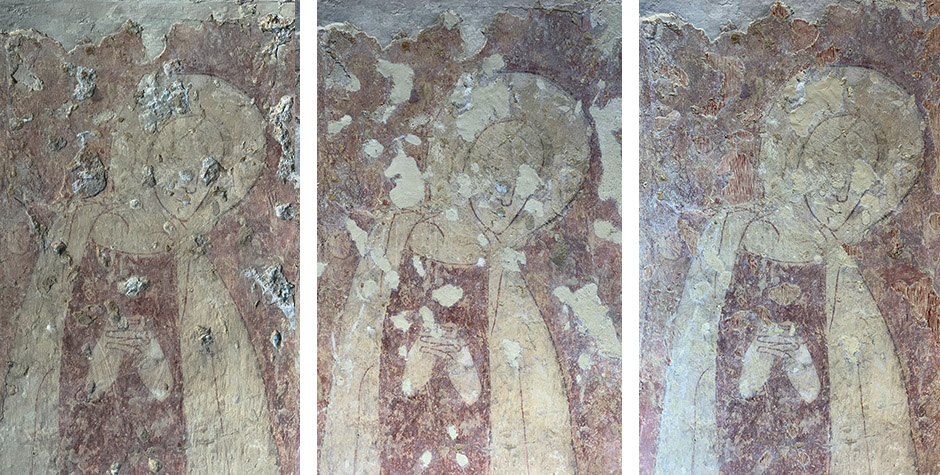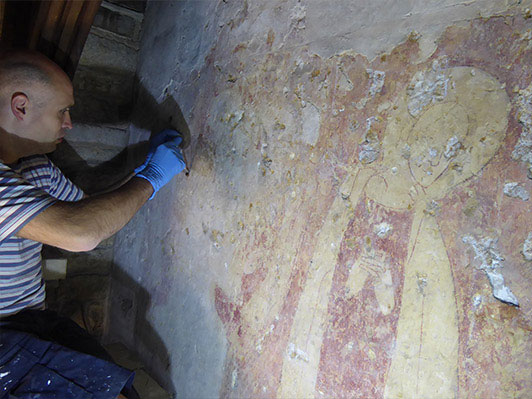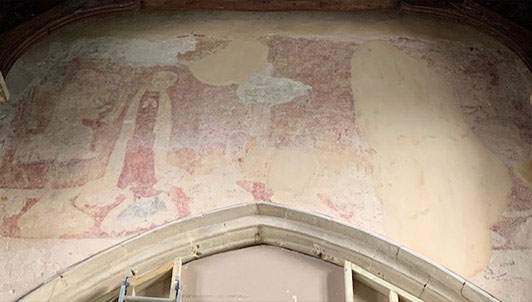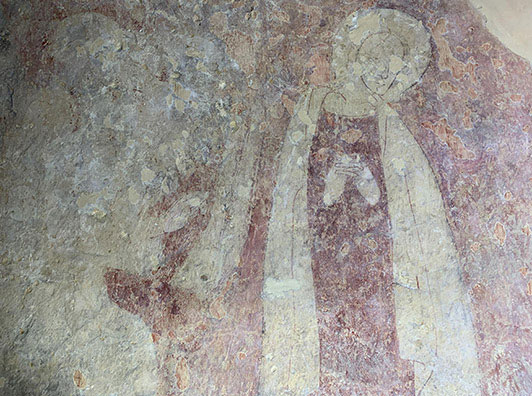Medieval Wall Painting in St Peter’s Church, Little Oakley
August 5, 2020 | By Hirst-Conservation |
The crucifixion scene in St Peter’s church in Little Oakley highlights not only the great skill of medieval artistry, but also the ravages of water damage, mechanical impact and effect of prior overpaint and restorations.
In July 2020 we completed conservation works to a Crucifixion wall painting located above a chancel arch of St Peter’s church in Little Oakley, a village in Northamptonshire. The church is listed Grade II* and it was built in 13th and 14th centuries, but the painting is thought to date from 15th or early 16th century. The building, currently in private ownership, is well maintained and is being respectfully adapted to become a residential dwelling.
Historically, the Crucifixion painting shared the fate of several monumental schemes obliterated during the Reformation, subsequently forgotten, overpainted, damaged by unfortunate events and revealed during a 19th century restoration. The figure of St John the Evangelist has been lost, possibly as a result of water ingress. Several details of the kneeling angels appear scrubbed down to plaster and the sculpture of Crucified Christ went missing. However, what is left gives a testimony to the great skill of a medieval artist able to express the quiet sadness of the Virgin and the exultation of praising angels using a palette of only three colours.
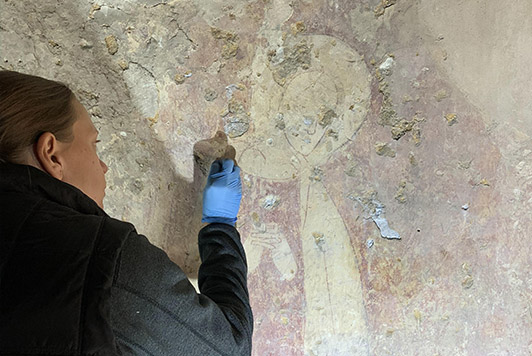 Surface cleaning and removal of residual limewash were very satisfying and a great pleasure to witness the refined lines of this 500 year old painting emerging from under the thick layer of dust and lime bloom. Further treatment included consolidation of underbound pigment and flaking paint with weak solutions of acrylic resin Paraloid B-72. For the stabilisation of thicker paint flakes, ground layers and substrate as well as plaster repairs, we used nanolime materials and lime-based mortars. Areas of repair and disruptive white lacunae were toned down with tinted limewash and pigments dispersed in water to ensure a good moisture transfer through the surface and improve legibility of the scheme.
Surface cleaning and removal of residual limewash were very satisfying and a great pleasure to witness the refined lines of this 500 year old painting emerging from under the thick layer of dust and lime bloom. Further treatment included consolidation of underbound pigment and flaking paint with weak solutions of acrylic resin Paraloid B-72. For the stabilisation of thicker paint flakes, ground layers and substrate as well as plaster repairs, we used nanolime materials and lime-based mortars. Areas of repair and disruptive white lacunae were toned down with tinted limewash and pigments dispersed in water to ensure a good moisture transfer through the surface and improve legibility of the scheme.

